People taking the Balkan route toward Western Europe routinely face violence and maltreatment. Addressing the root causes means moving beyond charity.
In 2015, large numbers of people sought refuge in the north-western countries of Europe. Four years of the war in Syria had already resulted in at least 6 million refugees, but they weren’t alone. Refugees from Afghanistan, who did not have resolved status in Iran and Pakistan and were tired of waiting for their country to become peaceful and prosperous, joined the Syrians who undertook this perilous journey. The journey was also undertaken by people from war-torn Iraq and other Middle Eastern and North African countries who were exhausted by poverty and violence caused by Western imperialism and colonialism.
A “disobedient” mass mobilization that “disrupted the European regime of border control” drew attention to the so-called “Balkan route” being taken by these people on the move. Once the global mainstream media, along with European Union policy-makers, referred to this mass mobilization in the language of crisis — as a “refugee crisis” or more dramatically “the biggest migration crisis in Europe since the Second World War” — the “altruistic” feelings of many living in the West were aroused. People started to organize across Europe, but also from North America and even Australia — even though both of those had their own fortresses to tackle — collecting humanitarian aid for the refugees. Bringing with them lots of unsolicited humanitarian aid, “do-gooders” flocked to the “hot spots” where the media reported that refugees were appearing in greater numbers.
Many do-gooders followed media reports to decide where to go. Of course, given that the crowded Greek islands — Lesvos, Samos and Chios in particular — were the most reported on, many went there. But the media needed dynamic news, and reporting followed new “crises” that were appearing along the Balkan route and beyond. After the Greek islands, do-gooders started popping over to inland Greece (Piraeus port, Athens, Thessaloniki, Idomeni), then the park near the train and bus stations in Belgrade, then Preševo, then Horgoš and Roszke, and later Budapest’s Keleti railway station, among other places. Some of the many do-gooders — both organized groups and individuals — would stay a few weeks; some would stay for a longer time while others would come for a few days and move on or return home.
I was one of them. And I know how you get hooked — whether due to feelings of compassion, usefulness, or adventure.
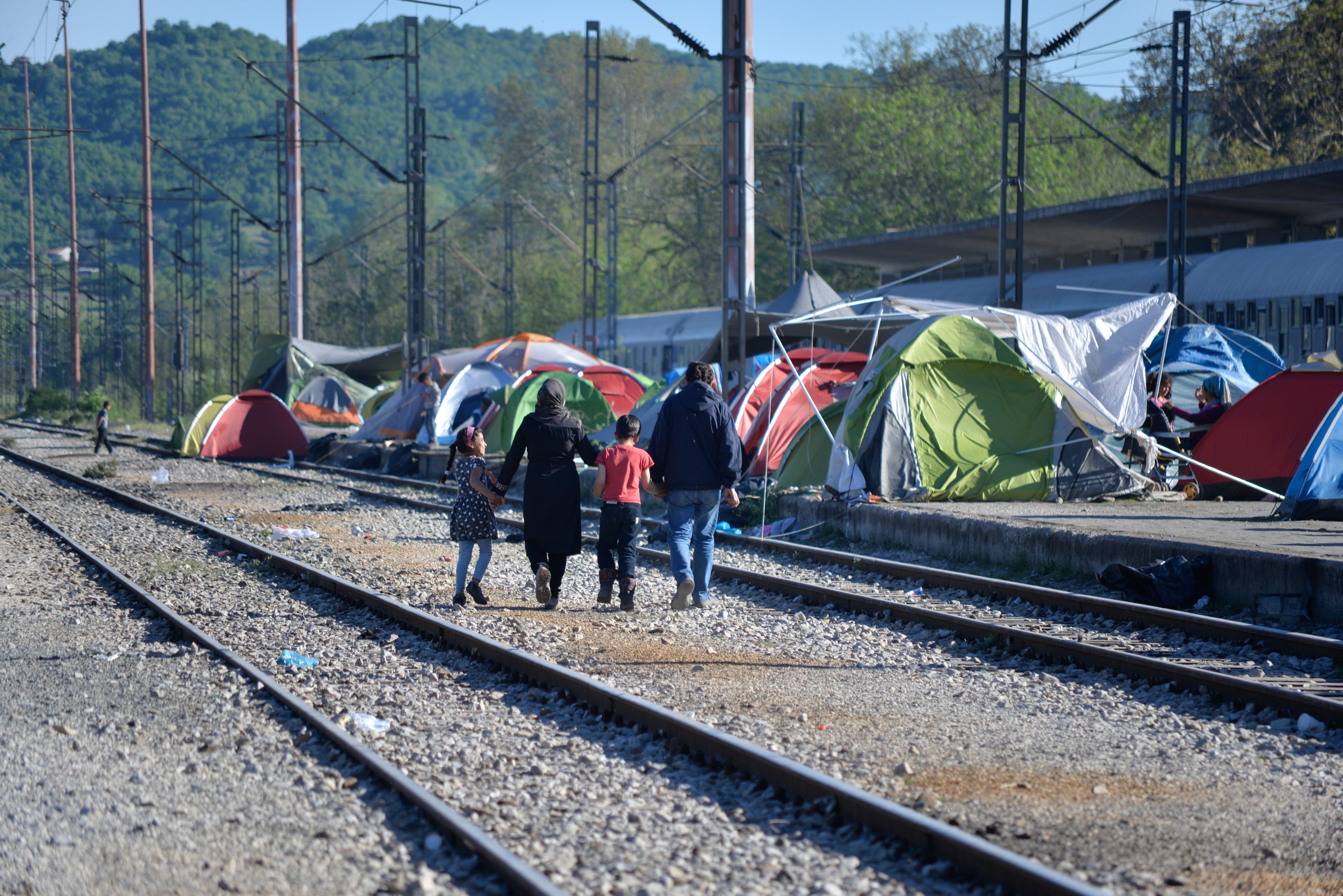
As someone who survived the war in Bosnia and Herzegovina (BiH) and who experienced some form of displacement, as well as a feminist socio-legal scholar and human rights activist, I not only had many mixed feelings but was also very aware of my responsibility to bear witness and act to prevent degrading and inhuman treatment of people. The lessons from the regional feminist peace activism during the war in BiH taught me several things: solidarity and empathy are important, but they cannot, and must not, be reductively understood as the provision of care. Rather, they should primarily be understood as political actions.
Engaging in solidarity actions with people on the move on the Balkan route when you see and understand the world around you through a feminist lens enables you to recognize oppression and the mechanisms of violence. It enables you to see how EU migration policies toward people passing through the Balkans are becoming increasingly dehumanizing, racist and violent: from initial acts of compassion and charity, through the experience of strictly controlled EU migration policies and the militarization of borders, and the new approaches to “migration management” with the co-option of international multilateral institutions, such as the International Organization for Migration (IOM).
We have all continued with our unsolicited charity, but feminist principles demand from us far more than just being passive witnesses of violence. More than five years since the increase in the number of people passing through the Balkans was publicly registered, and with the movement of people ongoing, it is high time to consider what solidarity with people on the move means and entails in order to resist ever-increasing violence, racism and fascism against people on the move.
Fortress Europe
Fortress Europe has been the term used for at least the last three decades in reference to EU migration policies that have promoted the criminalization of irregular migrations, the militarization of EU borders and the paying of non-EU countries to prevent migrants reaching EU borders. These policies have resulted in tens of thousands of deaths, while the Mediterranean has become the world’s deadliest border zone.
Over the last 20 years, many people who arrived in Greece irregularly, either by land or by sea, stayed in Greece. However, staying in Greece was not an option for many — for numerous reasons, including the fact that Greece itself was affected by such economic turmoil that many Greeks left the country to find a better life.
In order to reach the rest of the EU, many migrants took a land route through the Balkan countries connecting Greece with other parts of the EU.
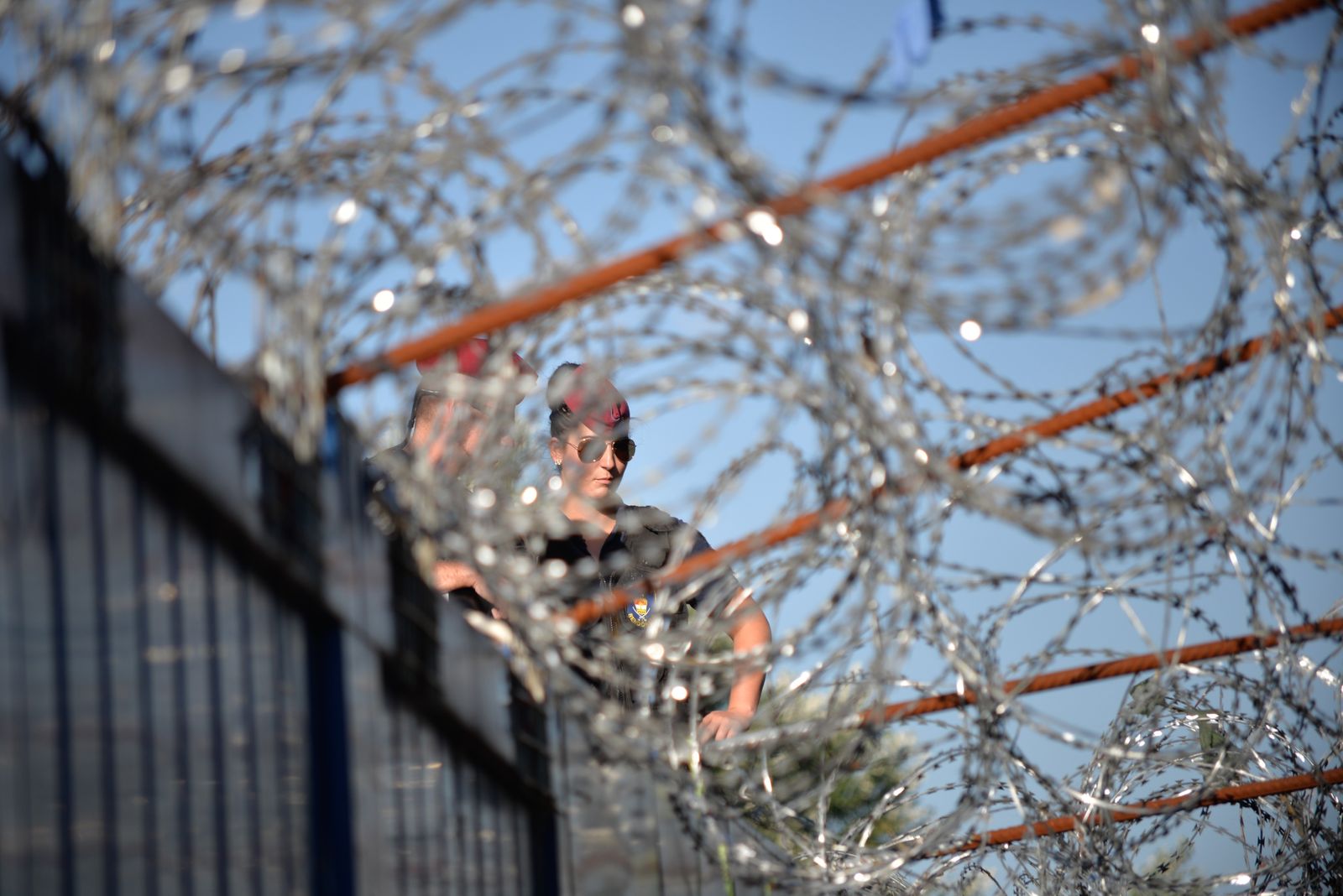
People on the move through the Balkan route
The Balkans have always been a trade and transit route for people and goods due to a geographical position bridging West and East. It was therefore logical that the region also became the transit route for people forced into irregular migration as they sought safety from war, persecution, poverty, the consequences of climate change or something else.
The Balkan route is not an easy choice for people to undertake. In addition to its difficult terrain and harsh climate, the Balkans have the complications and challenges of lots of borders.
Many countries in the region have not been, and are still not, part of either the EU or the Schengen border regime. In fact, many of the people from the Balkans themselves have had their own share of migration experiences and struggles with Fortress Europe, while escaping either the wars of the 1990s or economic and political hardship after the wars. EU border management policies have further affected and shaped Balkan countries’ border and asylum policies.
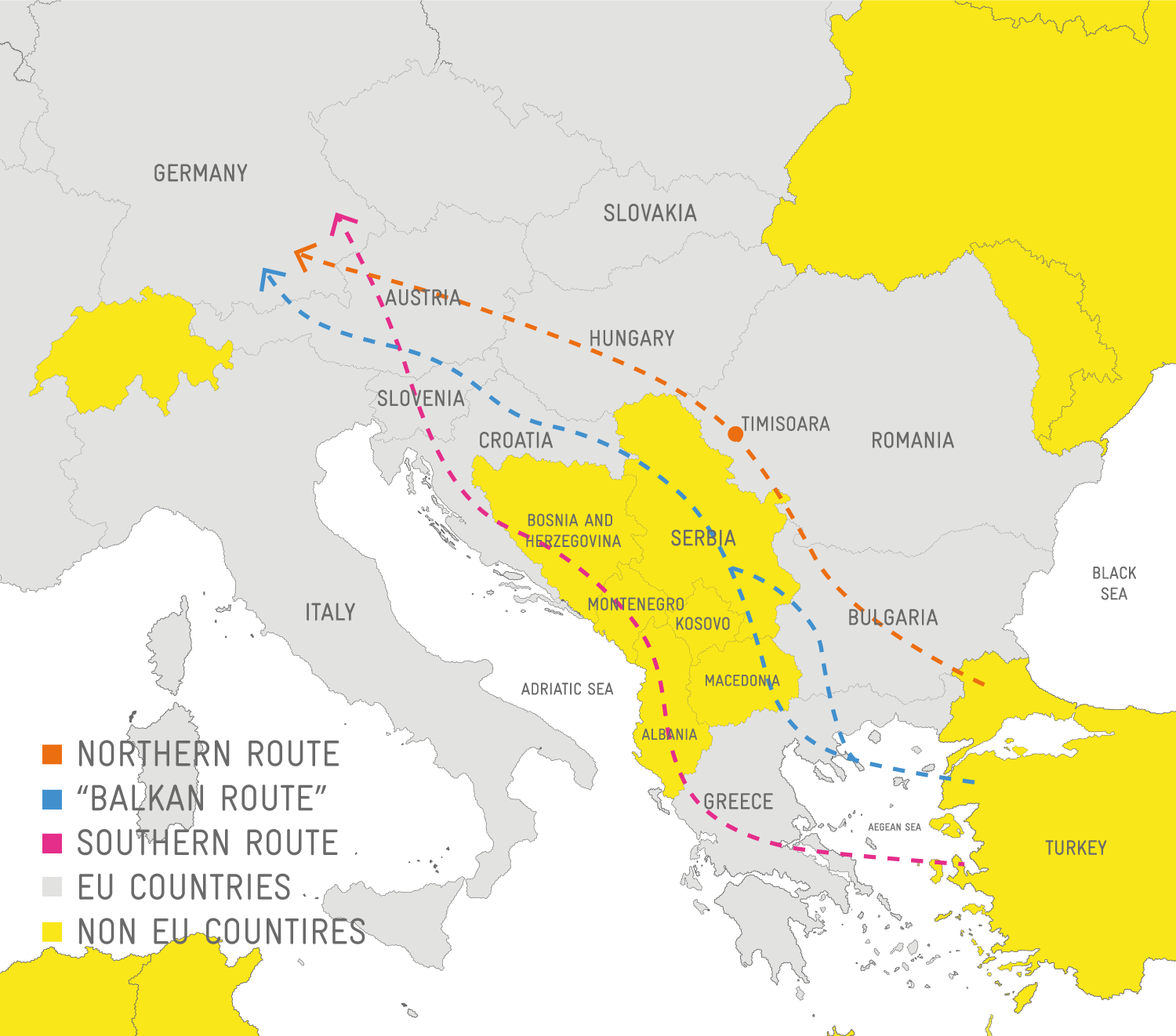
The Balkans became an additional buffer zone: In order to cross from Greece and Bulgaria (both EU countries) to north-west European countries, people have to exit the EU in order to re-enter it. For a range of political and economic reasons — including as a condition for visa-free access for their citizens to Schengen countries — Balkan governments agreed to create obstacles for people on the move in this non-EU space. In addition, re-entering the EU brings the threat of even further violence on militarized borders.
In support of those who were attempting this daunting journey, a group of us, mainly friends from Sarajevo who knew each other through other activist interventions in human rights issues in BiH, went to Belgrade and visited the park near the railway and bus station at the end of the summer of 2015. It was the media images of hundreds of people stuck in the park that pushed us to go.
In support of those who were attempting this daunting journey, a group of us, mainly friends from Sarajevo who knew each other through other activist interventions in human rights issues in BiH, went to Belgrade and visited the park near the railway and bus station at the end of the summer of 2015. It was the media images of hundreds of people stuck in the park that pushed us to go.
When we got to Belgrade, we talked to people in the park and tried to support them with the items they said they immediately needed, whether food, toiletries or clothes. We spent a few days in this park, before this area of Belgrade was knocked down to forcibly make space for the megalomaniac Belgrade Waterfront project. There, we witnessed the intersection of different forms of violence produced globally by neoliberalism.
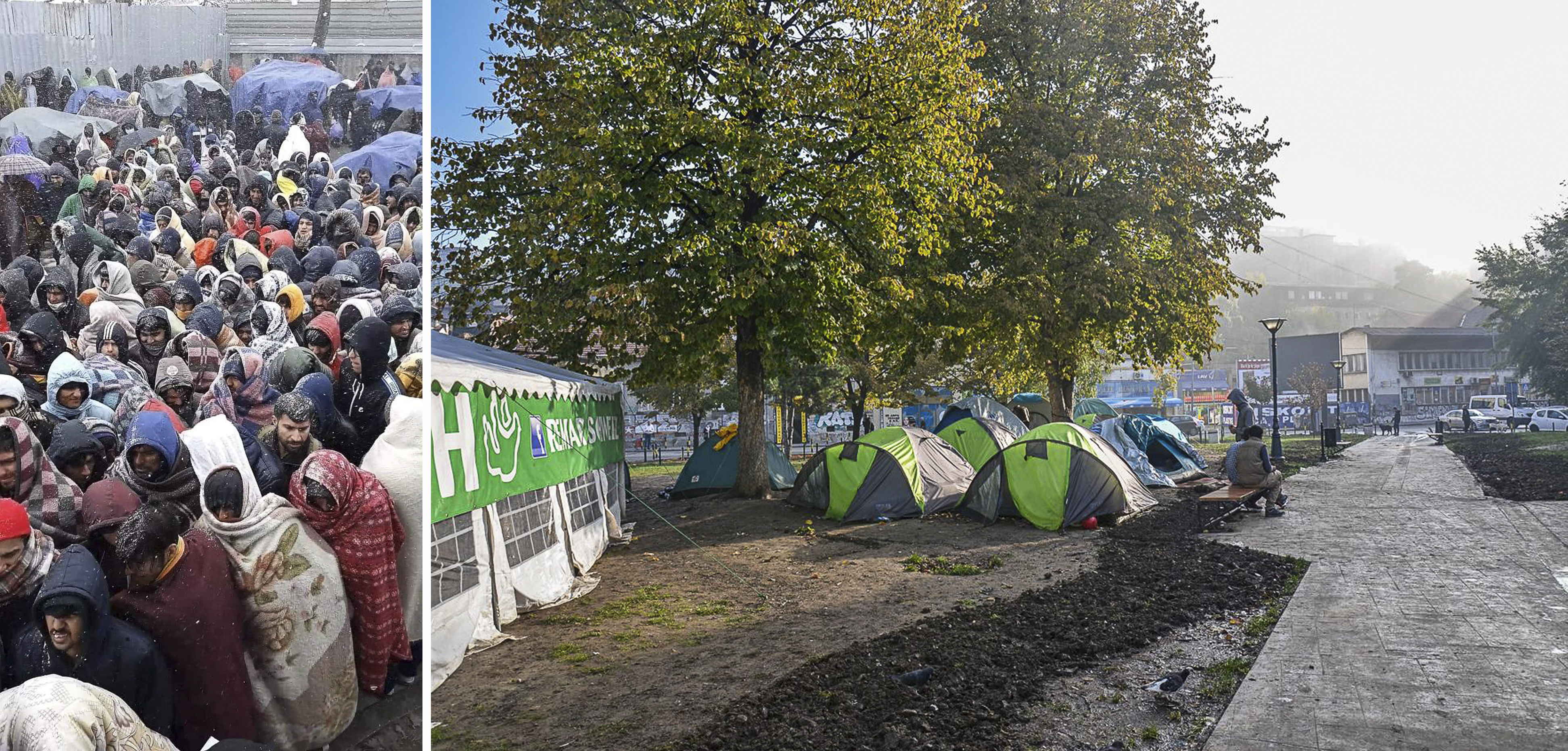
On the one hand, we were in the part of the city intentionally run down so as to be prepared for the violence of a globalized neoliberal urbanization project of regeneration. This was a part of the city being utilized by those in political and economic power as a rent-generating tool so that they could become even wealthier and more powerful. At the same time, they were diminishing the chances of those who lived in the city to access affordable housing, public spaces, nature reserves, and other urban resources, and were thereby pushing them further into servitude and poverty.
On the other hand, that rundown space held families violated and rejected by the neoliberal militarized border system of Fortress Europe. Worn out by a never-ending journey toward safety and stability, they were trying to find shade from the exhausting heat, taking a short nap in order to regain some strength to continue a journey toward further militarized borders.
All that violence makes a strong impression on you. As did later witnessing columns of exhausted people arriving in Preševo through the mud of a rainy morning here on the border between Kosovo, North Macedonia and Serbia — and not much more than 100 kilometers from the border with Bulgaria. It was the same exhaustion I saw in the columns of people crossing the border from Croatia to Serbia in the corn maze on one dark night near Šid; or in people trying to find something to warm themselves with after spending a freezing night in Tovarnik, a Croatian town on the border with Serbia. Witnessing tired people being forced to stay in the glare of the sun, the rain, or the freezing cold, and still smiling at you, affects you strongly and pushes you to get further involved with attempts to help — whether or not your help is even needed.
And yes, you feel useful when bringing cigarettes to people queuing; when handing out bottles of water and bananas as refreshment for people on the move; when giving women cosmetics and menstrual products and helping them with safe spaces; when playing with children in the park. In these interactions, you are certainly affected as a human being. But you also have to be an aware political being, which many of us have not been, with a responsibility to raise your voice against injustice. You also have to think, which many of us have not done, about your position of power and whether your actions are, in fact, patronizing.
Of course it was important to make the struggles with violent borders visible. And of course it was important that people mobilized to support others. However, looking now from a distance of more than five years, all that was in fact yet another neoliberal spectacle which obscured — and is still obscuring as it is still going on — the causes of both this mass migration and the resulting humanitarian catastrophe. These causes included global capitalism and the militarization of borders.
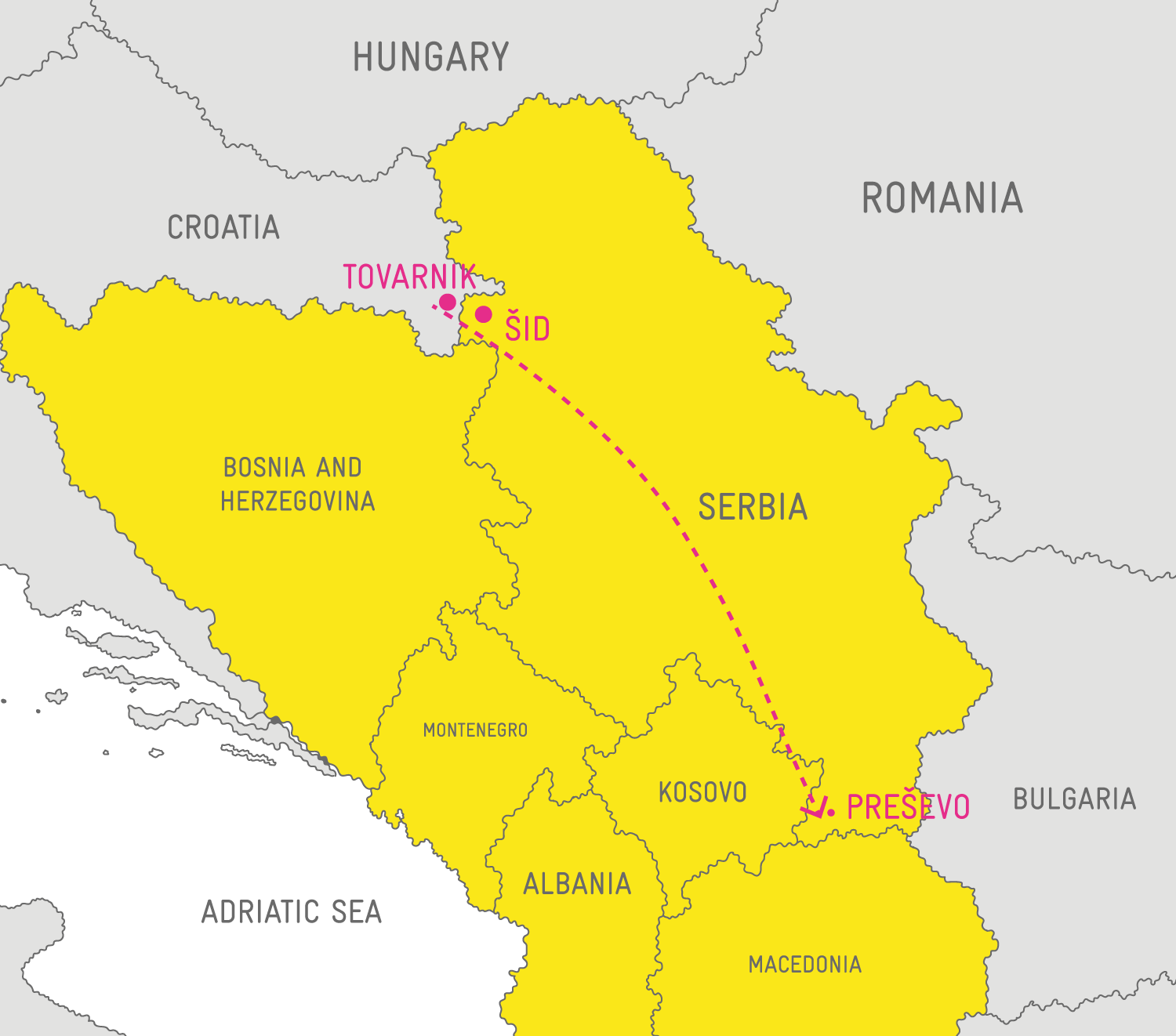
Care activism as a woman’s ‘lot’
During the 1990s, much of the feminist energy accross the region was spent on the direct provision of care. And it was much needed — by refugee women, by women survivors of wartime rape, by women who became sole carers and breadwinners, and others. But it also influenced the mainstream public perception of care activism as a woman’s “lot,” reinforcing the patriarchal stereotypes of women’s place.
True, at that time, feminist activists in the region also engaged in peace activism. They also, along with international feminists, formulated demands and pushed for the prosecution of war crimes, especially prosecution of wartime rape that was disproportionately committed against women. However, despite all their efforts, feminists and women activists were rejected as political actors in peace negotiations and discussions that determined countries’ political and economic power structures: A feminist political vision of peace and equality was ignored.
This experience has taught many of us feminists from the region about the importance of not getting entirely immersed in the provision of humanitarian aid. The experience of the regional dynamics of the 1990s also taught us that, as feminists, we have to be aware of our positionality and the power dynamics between us and the people to whom we are providing humanitarian aid.
Uruguayan journalist Eduardo Galeano
In this way, I have been aware that even though I am from the periphery of Europe, to people on the move I still appear as marked by whiteness and European power. In the current case, as we have been providing humanitarian assistance to people on the move on the Balkan route, it is their bodies that have been exposed to the violent experience of their journey, not ours. So the questions of representation, of who speaks in whose name, along with the responsibility not to be silent about human rights abuses, have become permanent threads of my thinking.
One of the main questions faced by me and my fellow feminists from BiH in the context of our activism in relation to people on the move was the question of how we understand solidarity. What is specific to the concept of feminist solidarity, and how should we apply it in this situation?
Feminism teaches us how to disentangle our actions from the system of oppression and not to fall into the trap of the system’s co-option of our solidarity. An example of these traps is charity. This criticism has mainly been addressed in academic circles around postcolonial studies. Unfortunately, it has never become mainstreamed, and we definitely do not see it much discussed in the context of humanitarian aid directed toward people on the move in the Balkans.
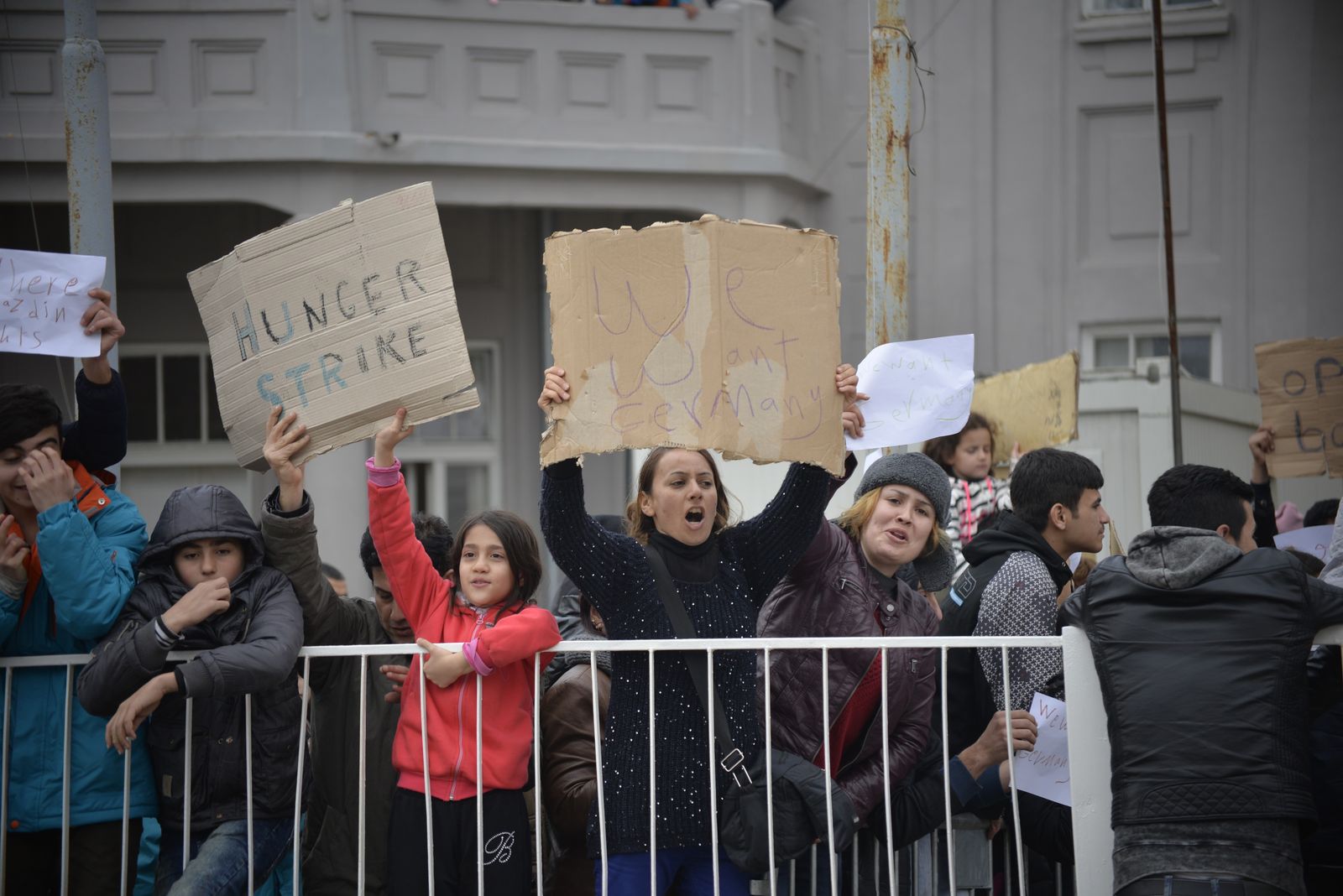
When talking about solidarity with people on the move through the region of the Balkans we live in, we are aware that our solidarity is still shaped by unequal power positions.
In the context of our interactions with people on the move, the first understanding of solidarity thereby comes in the opposition to charity. In this sense we are led by the principles famously expressed by the great Latin American writer, Uruguayan journalist Eduardo Galeano: “I don’t believe in charity. I believe in solidarity. Charity is so vertical. It goes from the top to the bottom. Solidarity is horizontal. It respects the other person. I have a lot to learn from other people.”
Additionally, feminism has taught us a lot about solidarity: American author and social activist bell hooks told us 35 years ago that political solidarity cannot be based on a culture’s dominant ideology but rather emerges during communication in the situations when ideological disagreements occur. Taking the differences into account, solidarity is therefore a form of political alliance and (promise of) political action through which we are expressing our empathetic support toward the other. The alliance and actions are determined during the two-way communication that occurs during our interactions.
When talking about solidarity with people on the move through the region of the Balkans we live in, we are extremely aware of the difficulties of establishing adequate interactions and communication for clearly determining political alliances and action, due to these people’s mobility. Consequently, we are aware that our solidarity is still shaped by unequal power positions.
Nevertheless, we feel a responsibility to act, as feminist politics requires us not to be silent and accepting of fascist and racist politics but instead, through solidarity, to dismantle them.
Previously historically invisible, women have become more and more visible at the forefront of political struggles for equality across many parts of the world, to the point of being glorified in photo compilations circling online. In the context of solidarity with people on the move, two women sea captains became well-known after facing long term jail sentences for disobeying unjust orders in order to save the lives of the people on their boats.
On the Balkan route, though, women showing solidarity with people on the move have not been so visible. While it is true that many joined in the provision of humanitarian aid, feminists (many of whom were local) have nevertheless been some of the most vocal and political activists in the field since 2015, fighting racism and xenophobia.
The discrepancy between local and international actors’ humanitarian engagement became particularly evident in charity interventions. For example, in the plethora of charity interventions coming from all over the Western world, many local feminists have been sidelined once they become critical of charity interventions and their political aspects. Their criticism was that charity is an easy way out as it does not engage with causes (in this case the EU’s Fortress Europe policies), since for many international actors this would mean engaging in political struggles at home. In addition, current charity interventions by international actors are more reminiscent of “voluntourism” than of the political solidarity interventions trying to stop the EU’s militarized and violent borders and migration management. Rather than engaging in political work, it is easier to undertake the tourist adventure of seeing new places and at the same time doing “feel-good” humanitarian work. However, “voluntourists” ignore their political interventions both in the communities to which they come to provide humanitarian aid and in objectifying people on the move.
Charity is not the politics but it contributes to and enables a violent and patriarchal society that oppresses us all.
The dynamic created along the Balkan route between international and local actors providing humanitarian aid has been reminiscent of the Bosnian experience immediately after the war (and the situation has not changed much since) when international actors flocked to BiH to “build peace.” Bosnians were entirely rejected as political actors by internationals, as Kimberly Coles showed in her research focused on the relationships of the internationals who came to “build peace and democracy” toward people living in BiH. However, this time around, the international charity discourse excluded two groups: both the people on the move and the “locals.”
Still, there are exceptions to the rule. Some local people also insisted on engaging only in charity work and refused political engagement, ignoring the fact that charity only enables further exploitation and reinforces inequalities. Meanwhile, some international charity organizations and groups engaged in political work especially in their home countries, the EU member states — recognizing that the root cause of violence and militarization stems from the politics of Fortress Europe.
Thus, feminist politics are teaching us to think about power relations, and not just power relations in general, but also power relations in our solidarity and relations with others. We must not conflate charity with solidarity as charity is for the status quo. Charity is not the politics but it contributes to and enables a violent and patriarchal society that oppresses us all.
The corridor: EU regains control
Back to the autumn of 2015 — that year, the EU’s response to the sudden visibility of the Balkan route and the mass mobility occurring there not only shaped the Balkan route itself, but also framed the solidarity politics along the route.
It took several months for the EU administration to recover from the first shock of mass movements toward the EU and to find a way to regain control over the borders and “management” of migrations. This resulted in the organization of a “humanitarian corridor” to channel the movements through the Balkans and to the north-western EU.
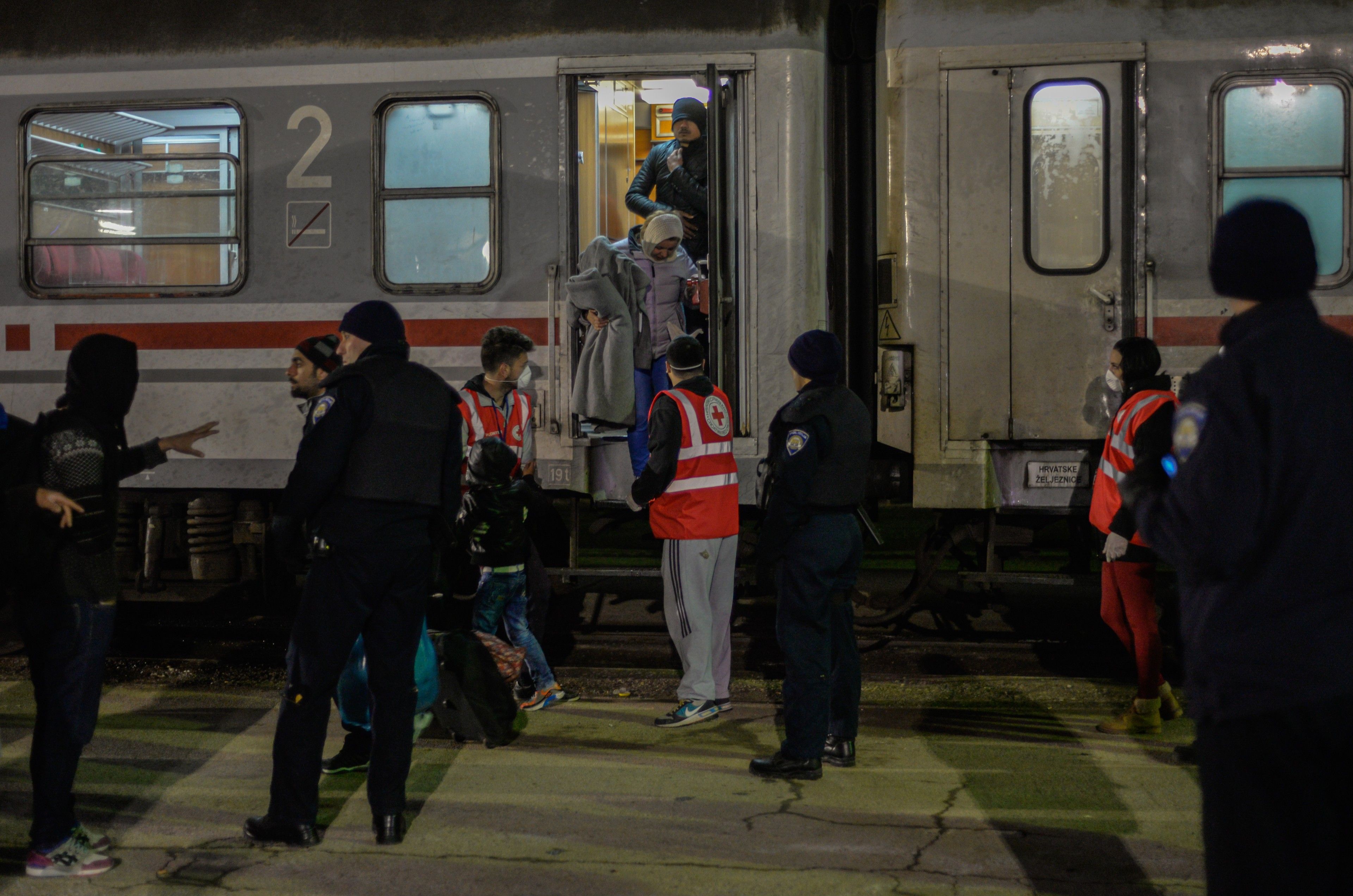
The humanitarian corridor was a formalized route from Greece to central and northern Europe that was coordinated by the states on the route from autumn 2015 until March 2016. Transport was organized along this corridor in trains, buses and masses of walking people who were “guarded and directed by the police who forced people on the move to follow the corridor’s direction and speed.” While the corridor enabled at least half a million people to move faster and more easily from the south to the northwest, it was just a temporary “solution” to allow the EU to draft stricter measures, further militarize borders and (re)negotiate agreements on the externalization of borders (for example the EU-Turkey and EU-Libya deals that incentivized Turkey and Libya to prevent people from leaving their borders). At the same time, it allowed the EU to “offload” from Greece some of the “burden” of mass arrivals.
The official corridor meant not only a channelling of people’s movements but also racial segregation. The bodies in movement were effectively segregated from interaction both with local people and those who came from the affluent West to help. As the corridor neared closure, there was also active segregation of the bodies in movement, with only the West’s preferred nationalities being allowed to access the corridor. At the beginning of February 2016, entry to each country along the route was allowed only to people coming from Syria, Iraq and Afghanistan, and was limited later that same month to people from Syria and Iraq. In order for this to function, the military, police and administrative mechanisms of the states along the corridor were engaged. Financial support for this experiment was provided by the EU.
By chance, several of us feminists from BiH were within the group of international feminists allowed to enter the transit centers, which were established by each country along the corridor through the Balkan route. At these centers, people were offloaded from trains or buses, registered or at least identified, and then loaded onto the buses or trains that were organized to travel to the next country on the route. All these activities were hidden from the public eye, but we were able to witness the heavy militarization of this movement of people.
The speedy channelling of people was reminiscent of another, not so praiseworthy, time in the history of Europe and the Balkans.
We witnessed people being bussed from Preševo to Šid, being put on the train in Šid to Slavonski Brod, then changing trains in the transit zone of Slavonski Brod, and again the similar, but even more militarized, procedure of changing trains in Dobova. As we moved from the east to the west of the Balkan corridor, the militarization became even more obvious. What’s more, people channeled in the corridor were deprived of their liberty and freedom of movement as the heavily armed police guarded each of their steps during transit, making the corridor, in fact, mobile detention.
People feared border closures and being stuck in the middle, so there was some form of unspoken agreement to follow the rules and be channelled through the corridor. The speedy channelling of people was reminiscent of another, not so praiseworthy, time in the history of Europe and the Balkans.
In addition to visiting the masculinized and militarized transit zones in Serbia, Croatia and Slovenia, we had a chance to meet with grassroots activists as well as representatives of the UN agencies in Serbia and Croatia. There was again a gendered dynamic in these meetings: Men were in the leadership positions of the UN agencies (more political power, more money) and women were overwhelmingly present in grassroot organizations (forced to struggle for public and political space without any resources). Women-led grassroot organizations and initiatives — such as No Border and Women in Black from Belgrade, or Are You Syrious and the Center for Peace Studies from Zagreb — were engaged in solidarity actions with people on the move and quite openly criticized the racism, xenophobia and rising fascism in Europe. As in the 1990s war in BiH, the male UN officials again proclaimed neutrality, and seemed ignorant as to how the militarization of borders violated human rights.
The corridor closes: gendering migration
The EU “humanitarian corridor” was never intended to last long. It served a double purpose: to show the “human face” of the EU while simultaneously allowing it time to regain the control of mass mobility through the Balkans. In fact the “corridor” did not mean that borders were open, but rather that there was a crack in the border regime that was narrowing on a daily basis. People’s fears of a swift closure proved justified. The corridor closed for everyone in March 2016, after functioning for approximately five months. Borders shut one after the other, as soon as they were fenced off with razor wire, and people got stuck in the middle.
In the meantime, the EU once again shifted the narrative from “refugees” to “migrants” so it could secure the borders without quibbles from its citizens who might have felt sympathy for “refugees from war-torn Syria” but not for “migrants who want our jobs.” This also required a gradual shift in the gender representation of people on the move through the Balkan route.
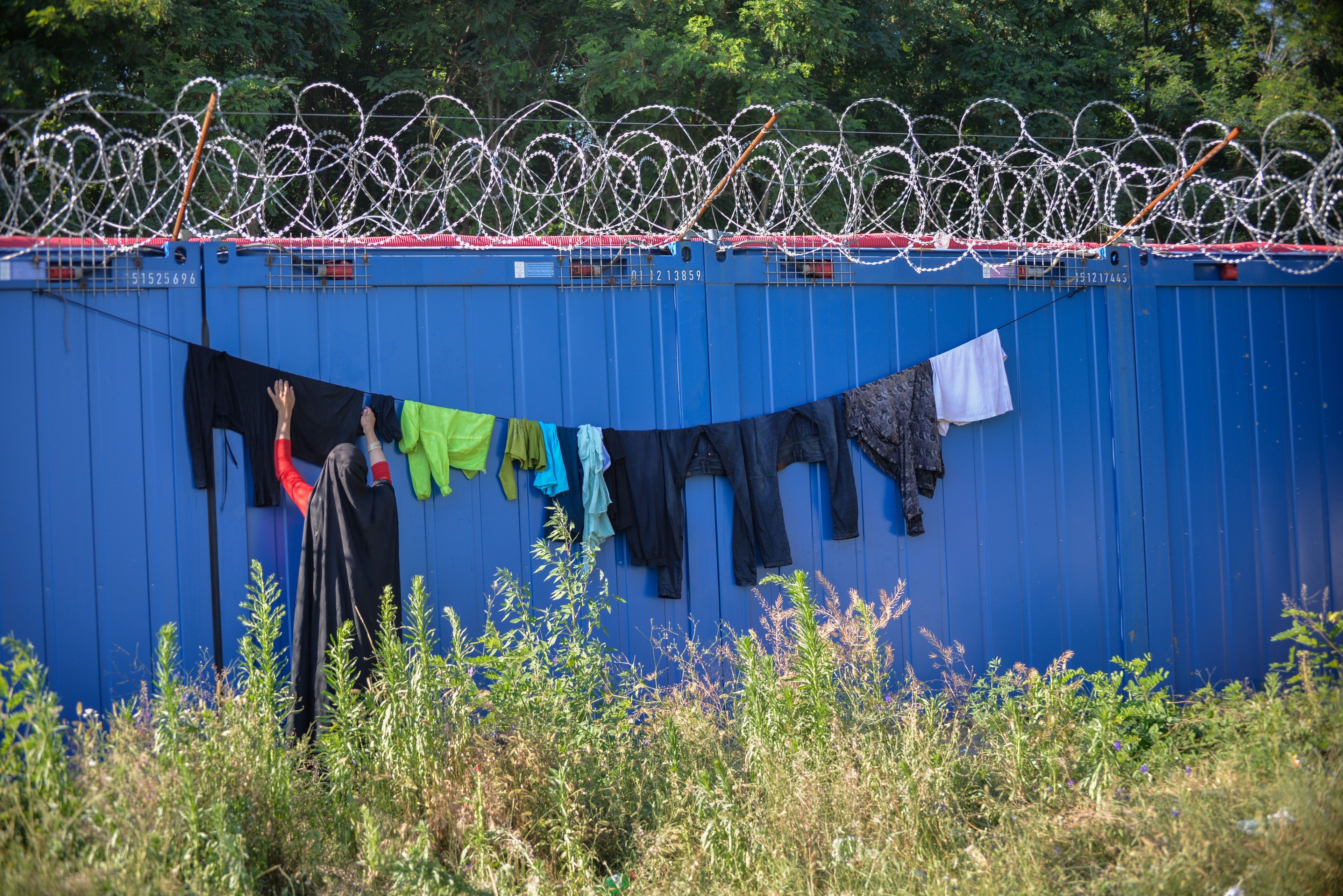
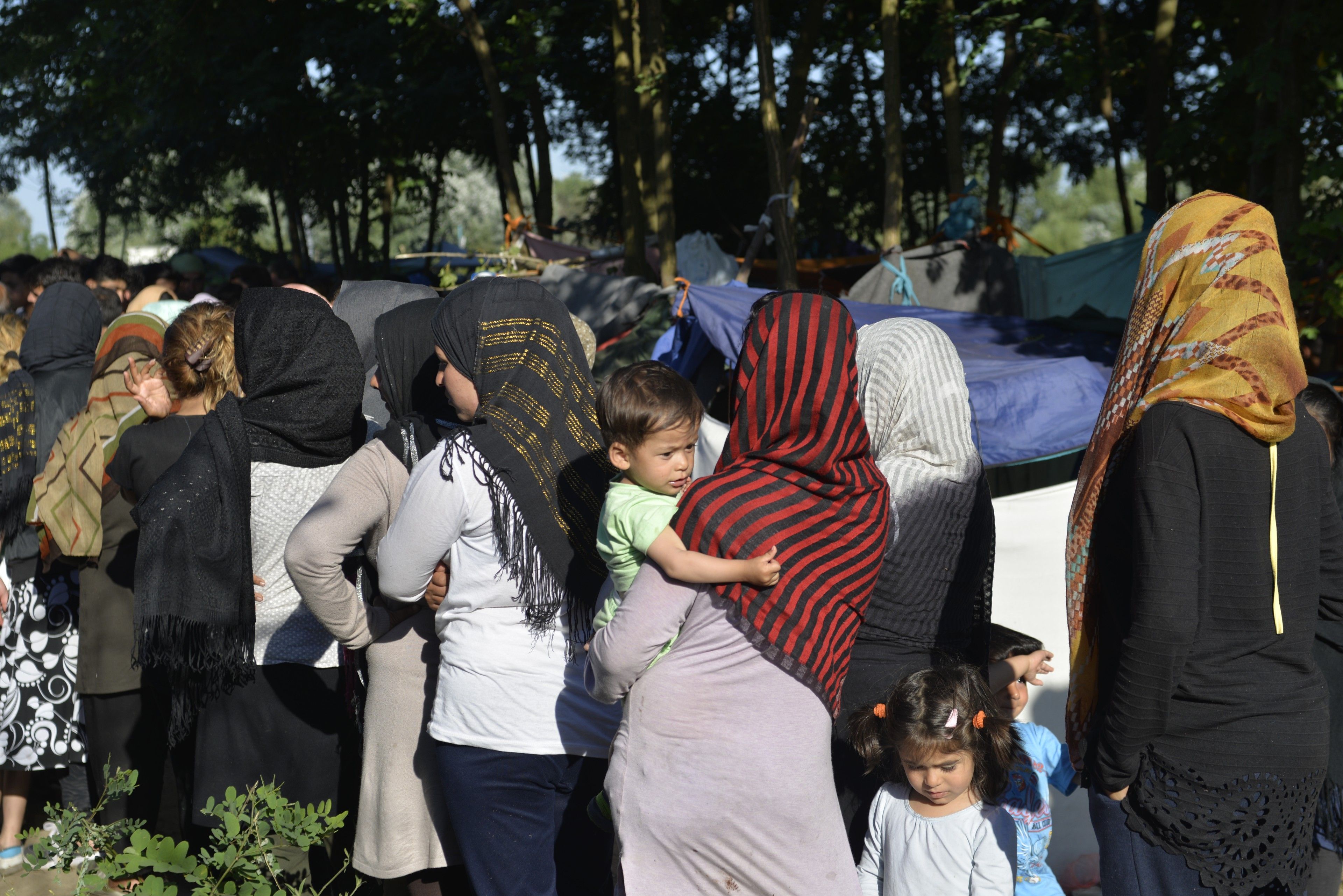
During 2015, within the mainstream media, women refugees were allowed to exist only as weak objects in need of protection: They were either mothers caring for children (and of course all mothers are then just passive objects, only existing to serve their children for whom we always have more compassion than adults), or victims of the violence of their male refugee partners (with women’s vulnerable bodies thereby being used to show the violence of male refugee bodies). However, reducing all women refugees just to their roles of carers in need of care or victims of protection (and all men refugees as potential perpetrators) ignores women’s agency and potential for forging solidarity-based political alliances.
After the final closure of the corridor, we witnessed a change in images: from the vast grounds of Idomeni covered with tents between which children played, to the grey images of the men freezing in the Belgrade ruins or among the construction sites of upcoming lavish developments. A patriarchal and orientalist logic pushes us to sympathize more with the children playing than with those young male violated bodies — them we somehow still fear.
True, after the borders between EU countries and the countries of the so-called Western Balkans were further secured, with an increase in border violence, the gender composition of people on the move changed and men became more visible and more present. Reasons for this include the fact that many underaged boys are sent off to feed their families, and — due to the harshness of the conditions of the route — male members of a family undertake the trip hoping to subsequently organize some more humane transit for the family.
This played into the patriarchal prejudice that only women’s bodies are vulnerable. In order for sympathy to be replaced by fear, an orientalist hypermasculinization and hypersexualization of people on the move had to take place. Thus, the crying faces of women with children — as if they were the only ones deserving white Western protection, and even then only as long as they were subservient, as no women with political agency were welcomed — were replaced with images of wild boys to be interpreted as “those who arrived here to sexually violate our women.”
Furthermore, despite continued witness to women’s struggles through the Balkan route, it is the imagined crowds of male bodies that dominate the current narrative about people on the move on the Balkan route. Only a few disruptions occurred to this vision but not all even got the status of mainstream media coverage. One event that reached mainstream media was the death of 6-year-old Madina Hussiny who was killed by a train after an illegal push-back from the Croatian border. But even this media focus was temporary, despite activists’ attempts to demand justice for Madina, and these activists being criminalized for making the story public.
What was made invisible was the violence of the border, the violence of the corridor, and later the violence of the camps. Also ignored was the racist, xenophobic violence directed toward people on the move and the gendered forms of harm these manifestations of violence produce.
The shift in the narrative that followed the closure of the corridor was also a shift in the inclusion of international organizations in migration management. Instead of having the role of monitoring human rights violations, multilateral organizations have been co-opted into migration management. What happened in BiH is a good example of how the co-option of international organizations in the EU’s migration management was marked by gendering. The best example is the EU’s decision to award tens of millions of euros to IOM in BiH to “manage migrations” through BiH, once the Balkan route was redirected that way.
In 2015, the UNHCR (along with UNICEF) had a visible (although not very useful) presence on the route. However, their offices have remained in the countries along the Balkan route, and despite their claim of a limited mandate agreed upon with each particular state, their presence at least created a feeling that someone was monitoring human rights. After the UNHCR’s failure to provide adequate support to refugees in the region during the wars of the 1990s, there were expectations that this time around the UNHCR would do better.
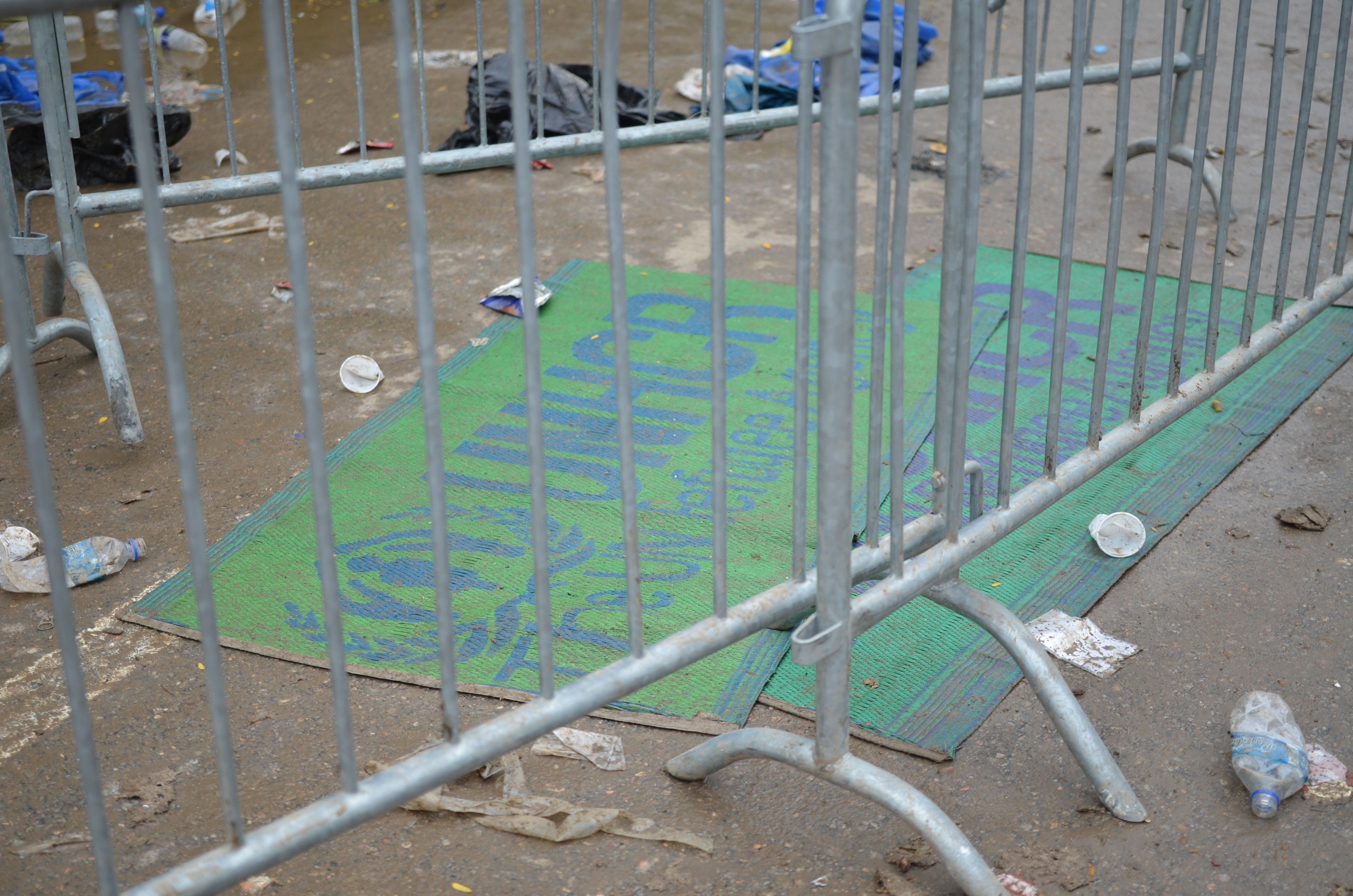
In BiH, the Law on Asylum even gave the UNHCR a role in the state’s asylum process. So when the Balkan route was redirected through BiH at the end of 2017 and the beginning of 2018, people started turning to the UNHCR for support. However, once the EU recognized that it could use the route through BiH to additionally manage migrations, it chose IOM as a partner instead.
While there were certainly other reasons for the EU’s choice of the IOM for cooperation (for example, IOM had taken over running the camps in Greece), one cannot ignore the fact that the representative of IOM in BiH was male, and the representative of UNHCR female. Of course this might just be a coincidence, but there is always going to be a lingering question of whether the stereotypes around gender played any role in the decision about awarding the funding.
The gendered elements in the struggles around funding for migration management were seen from the start: Once it became clear that the funding was going to be provided for migration management in BiH, the IOM took a more aggressive (masculine) approach to securing its visibility in the field. The IOM suddenly became more mobile and active in the field, while UNHCR was confined to the administrative role of registering new arrivals. In the end, while the UNHCR and UNICEF were included in the EU funding as IOM partners, the institutional memories of those organizations and the protection protocols they had developed over decades were replaced by the IOM’s undefined mandate.
Saskia Stachowitsch recommends a consideration of “gendered dualisms and how they operate according to a hierarchic opposition between femininity and masculinity or between ideal and deviant (feminized, hypermasculine, etc.) masculinities” of the institutions in order to see how gendering strategies are used in political and economic struggles. In BiH we can easily see the feminization of the state and hypermasculinization of the local government — both state and local governments should have priority in funding over the IOM given their legal responsibilities. Since the Dayton Peace Agreement made the state of BiH dysfunctional and decentralized, the state has easily been shown as hysterical — corrupt and without clear lines of decision-making. Using such a situation, IOM presented itself as a reliable migration manager, that is the representative of ideal masculinity. Consequently, IOM received the EU funding instead of the state.
Meanwhile, hypermasculinization as a deviant form of masculinization was also used to discredit the other potential recipient of the EU money: the local government of Una-Sana Canton — where the greatest number of people on the move got stuck due to the geographical position of the canton that borders with Croatia. True, the incapable local government of Una-Sana Canton easily trapped itself in becoming seen as hypermasculinized as through chaotic actions it continued to slide toward violent and racist reactions. It was easy to show them deviant (i.e. hypermasculinized), as the smooth racism and violence of the IOM’s camps and EU borders are invisible in comparison to the Una-Sana’s government aggressive actions.
With their inhumane and degrading conditions, these centers are more reminiscent of concentration camps than of accommodation respecting human dignity.
At the moment, conditions for people on the move in BiH are violent. Many are placed in the “reception centers,” which are supposed to provide shelter, food and health care for people on the move. Currently, there are eight centers in BiH, with different capacities, conditions and management. The management of the centers is murky, with IOM and the BiH Ministry of Security appearing to be jointly running six of them while the Ministry of Security appears to be running two small centers by itself, but also with the active presence of IOM. Two small centers run by the Ministry of Security are using facilities built for similar purposes prior to the increase in people on the move in BiH, while the other centers use the premises of abandoned factories, former army barracks, old hotels and even just fields. In each of these six centers, containers and/or tents are used to accommodate people.
With their inhumane and degrading conditions, these centers are more reminiscent of concentration camps than of accommodation respecting human dignity. The majority of the camps are overcrowded, without heating during the winter and without adequately hygienic conditions (many people have scabies, etc.) and without hot water. The food offered is insufficient both in quantity and in nutritive values. The justification for inhuman conditions and violence is gendered as they are claimed to be necessary to protect citizens from the wild men who should be happy that they are offered inadequate accommodation and meals in the camps.
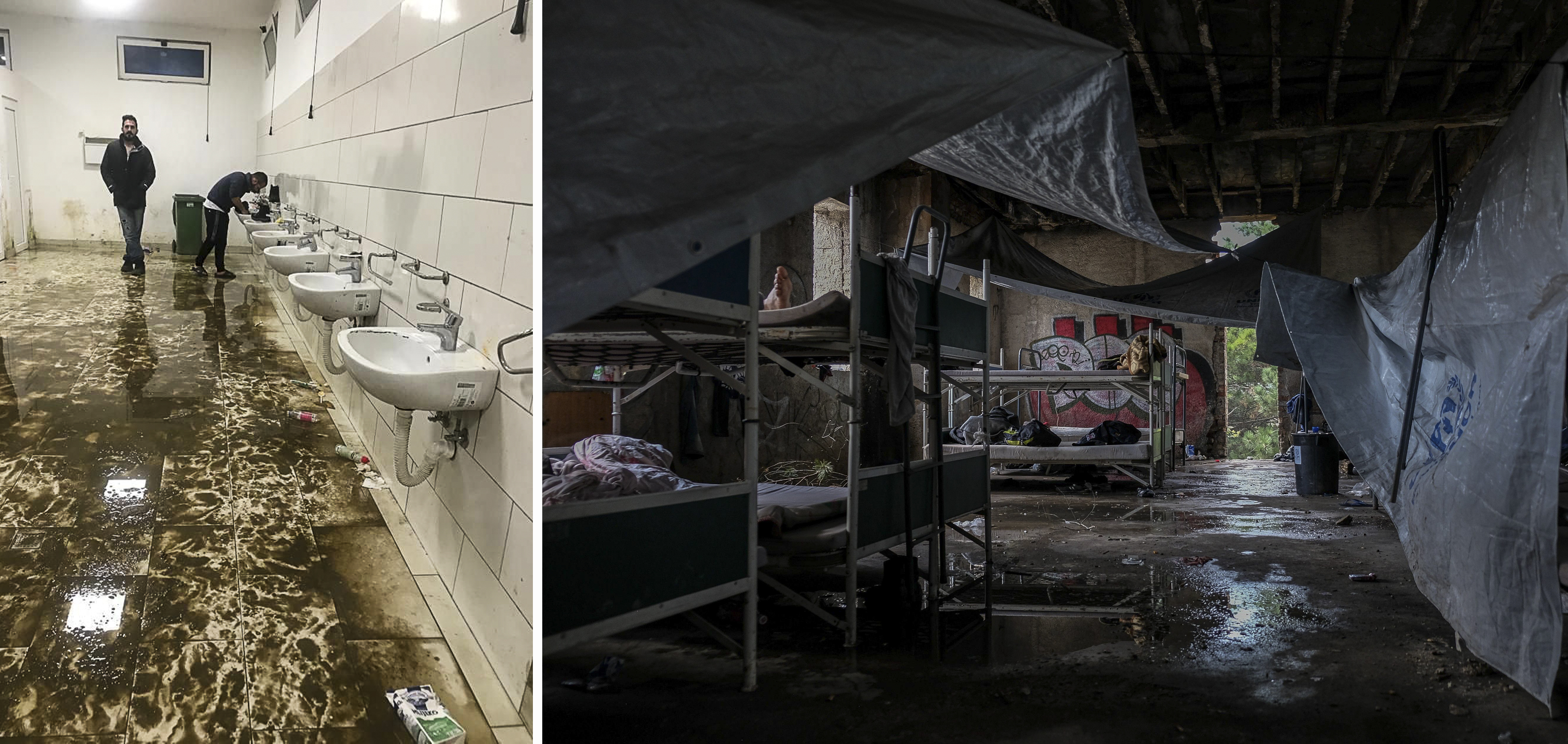
Many more people are left to entirely fend for themselves in the streets and woods across BiH. While police violence on the streets of some towns was visible before the pandemic, the measures for the prevention of COVID-19 have been used as an excuse for further increases in violence. And once IOM camps were militarized and masculinized (fenced, with private security engaged and limited access to people who are not registered in the camp as “residents” or employees, with arbitrary entry of the local police, and arbitrary use of violence by police, private security, employees, etc.) there was no change, even when a woman replaced the male IOM representative.
Questions of representation
In the context of making the experiences of violence visible, feminism teaches us that we constantly have to reevaluate the issue of representation, and who speaks in whose name. One important way to apply this reevaluation is by considering our relationships with people on the move and how to secure a consistent voice for people whose time in the area is only temporary.
For the majority of people, the Balkans is just a transit route. Faced with the constant fear of heightened security, militarization and increased violence on the borders, people on the move are trying to stay for as short a time as possible in any of the countries of the Balkans. Under such conditions, how can we secure safe space for people on the move to speak? How also to avoid treating people on the move as a homogenous group as if all have the same experiences, ambitions and goals? How do we make sure that it is acknowledged that women have agency, and are not just volatile and vulnerable bodies? It is not sufficient to ask them something in front of a camera — as the media like to do — while they are passing by or are in a situation when feeling most vulnerable.
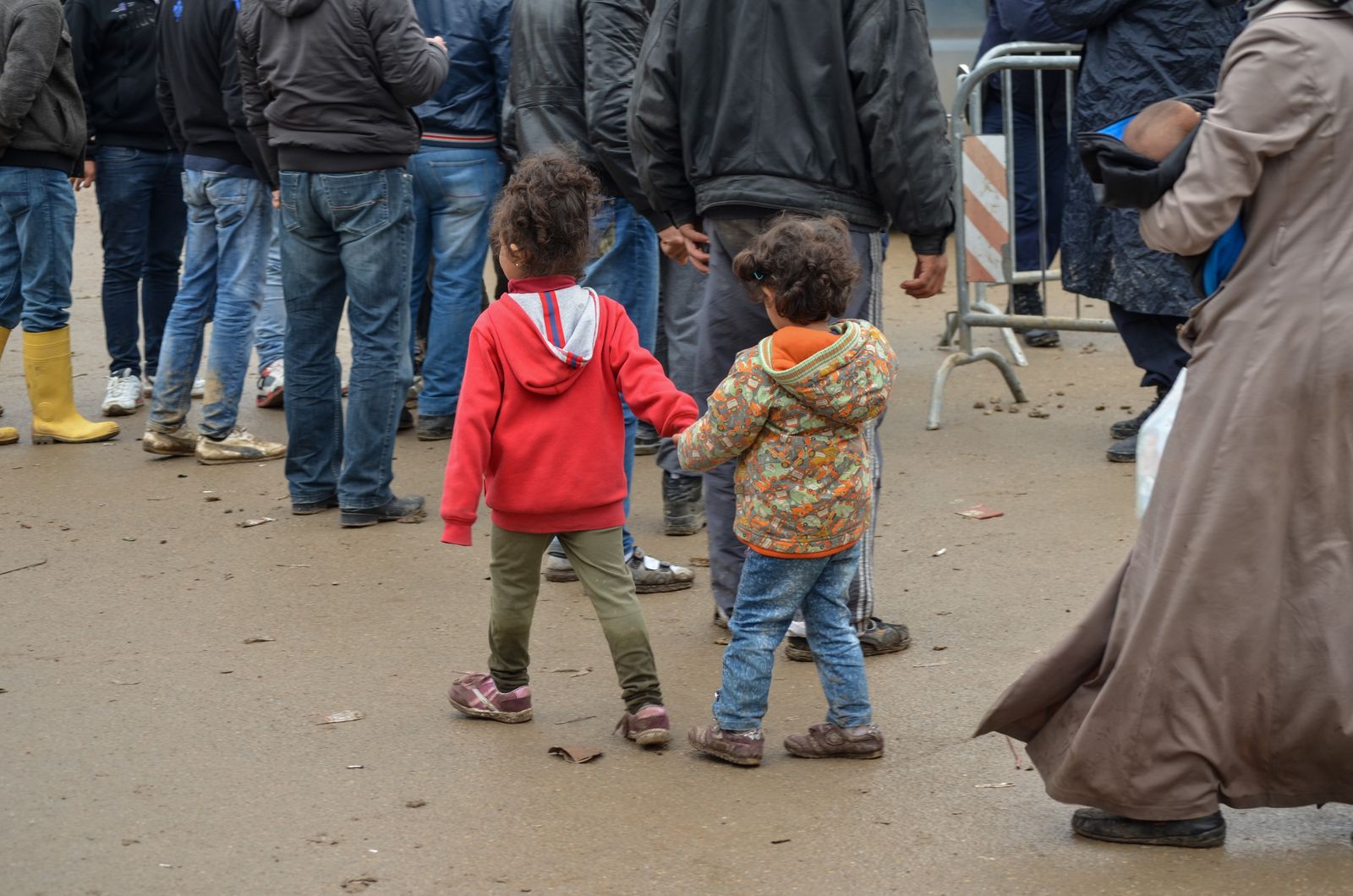
I came across encounters of reports of physical violence against people on the move the first time I went to Belgrade in August 2015. There, we met young men who had crossed the route through Bulgaria and who told us about the violence they had suffered from the Bulgarian police and vigilantes, in particular being traumatized by dogs set on them.
Aware that we were reporting on human rights abuses against others, my feminist friends and I had to make sure to avoid orientalization and the othering of these young men. Our experience of the patriarchal dynamics of male nationalist and international elites in post-conflict BiH, and the exclusion of some voices from discussions about political and economic solutions, required us not to dominate discussion. We had to thoroughly reconsider what solidarity and empathy mean. Furthermore, we had to consider how to talk about violence and not endanger people exposed to violence. Of course if you witness the most extreme situations of violence, you act immediately. But how do we make even this intervention meaningful and lasting? Especially if the people do not want to remain in the country.
And what about violence produced under the pretence of protection? Women on the move who get stuck in the country they are passing through — whether for a few days, a few months or even a few years — are most often forced into camp settings where their safety is threatened. Women are not safe from violence perpetrated by the system nor are they safe in patriarchal environments.
Of course, as feminists we have been primarily concerned with the wellbeing of women. And as an informal group of feminist activists from BiH, we have tried to pay specific attention to the particular ways we could assist women and offer our solidarity with them. However, for several years now, our only gender-specific support to women was reduced to the provision of humanitarian aid to pregnant women who, for a range of reasons, were not in the camps: organizing medical care for them to give birth, assisting them in the administrative details of their children’s registration, supporting baby and child care. It is important to support women in such a way, but we are still struggling with how to go beyond that.
The camp is a patriarchal environment and it imposes patriarchal restrictions on women.
Another element of support concerned finding adequate mechanisms of protection for women victims of gender-based violence. The majority of women are placed in the camps, and as an informal feminist group we are not allowed access to them there. Without being able to establish any relationship of trust, we are reduced to bringing women baby food, clothes, toiletries, baby diapers and menstrual products, when they run out of those items in the camps. Furthermore, the fact that the majority of women are staying for a short time in BiH leaves us with only fleeting opportunities to assist women to integrate, such as through finding work or language classes.
In camps, the space organized for women is mainly within the scope of aid provision — stereotypically, neoliberal “women’s empowerment” activities that actually just encourage women to sew, knit, cook and take care of children. It is rarely feminist political activity. The camp is a patriarchal environment and it imposes patriarchal restrictions on women. How do you support women under such conditions, especially when they are only there temporarily?
In this context, how can someone direct people to use protection mechanisms, if they even exist, in the countries that are constantly trying to criminalize irregular migrations? This is especially problematic as those countries keep ignoring the existence of the women on the move and as some of the structures of those countries are actually those perpetrating violence against women on the move, as in the case of border police.
We are aware that we have to counter the criminalization of irregular migrations. In addition to criminalizing people, it also criminalizes solidarity. We have seen this in attacks on women human rights defenders in BiH. In addition to forcing women out of public visibility, it also obstructs feminist cross-border networks.

How can we instead create a political network that addresses patriarchy, racism, xenophobia, violence and fascism?
Of course, networks of solidarity exist across the Balkans, mainly oriented toward supporting victims of violence. Some feminist networks were forged even before the wars of the 1990s and have been functioning since. But, even in these cases, the capacity and context of the feminist groups in different countries vary.
Nevertheless, there is a need to form feminist solidarity networks that provide support for women and recognize their agency rather than just seeing them as vulnerable bodies. There is a need for safe spaces to open two-way communication to create political alliances and formulate together the political action to be taken. This also means getting out of our comfort zones and addressing the mechanisms of oppression and violence, such as borders and asylum law, but also the militarization of our entire societies. And, of course, the actions need to be carried out across Europe, demanding that the causes of inequalities be addressed. Such networks could integrate forces into one all-encompassing struggle against fascism.
However, there is a long and exhausting road ahead as the neoliberal framework suits racism, fascism and violence well so, at the moment, they are increasing. Nevertheless, a feminist perspective, liberated from neoliberal chains, can assist us in this struggle, the same way it assists us to reflect on our responses to charity, migration management and border violence.
Feature Image: Sanja Vrzić.
This publication is supported by Rosa-Luxemburg-Stiftung Gesellschaftsanalyse und politische Bildung e.V. – Ured u Bosni i Hercegovini.
- This story was originally written in English.

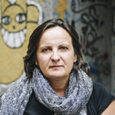
“I don’t believe in charity. I believe in solidarity. Charity is so vertical. It goes from the top to the bottom. Solidarity is horizontal. It respects the other person.”